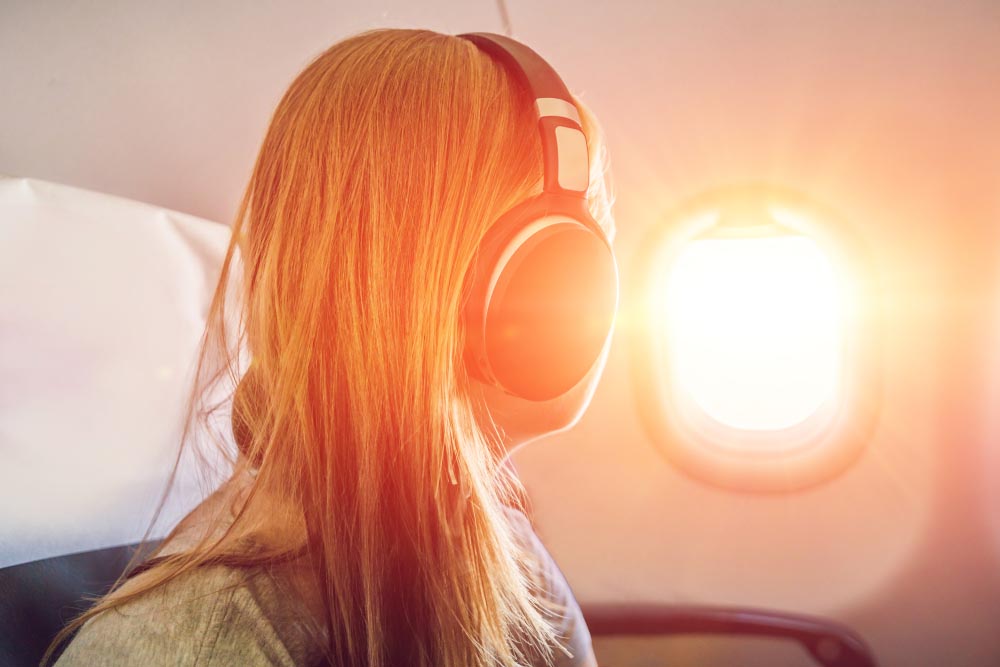Pteromerhanophobia, or fear of flying, affects many people around the world. Many complex factors trigger this fear. There is, for example, an obvious fear of crashing. Yet, this is just a small fraction of the overall fright. Being inside an airplane can also trigger claustrophobia and acrophobia (fear of heights). And, in this modern-day and age, being in an enclosed space with so many people make us worry about our health and well-being.
To those who don’t suffer this affliction the solution seems easy: just use logic. This does actually help many people. Researchers from the Massachusetts Institute of Technology conducted extensive research in the field of commercial flight safety. They found the following: the death risk per flight was one in seven million.
Even if you took a flight every day of your life, it would take you nineteen thousand years before you would succumb to a fatal accident. Flying coast-to-coast in the USA is ten times safer than making the trip by train. You are nineteen times safer in a plane than in a car. But any sufferer of a phobia will tell you that logic doesn’t always help. The fear is often irrational, yet it remains overwhelming. Luckily, there are a few things you could do to cope with it!
5 tips to manage your fear of flying
Whether you are a frequent flyer or heading out on a one-time trip, you can get peace of mind by following these 5 strategies. While they may not completely eliminate the fear, they can change your perspective and make flying a more pleasant experience.
1. Talk to your flight attendants
When they say they are there for you, they truly mean it. Flight attendants have the mission of making you feel good, safe, and comfortable throughout the flight. What’s more, they are trained to handle hyperventilation, fainting, and any other health issues to guarantee your safety. In short, you are in good hands! So don’t be afraid to let your flight attendant know beforehand if you are feeling stressed out and anxious about the journey. And here’s a bonus: open up with your fellow fliers. If you are traveling with colleagues, friends, or family, don’t hesitate to talk about your fears and worries. They may be able to offer you moral support and a helping hand.
2. Choose your seat wisely
When it comes to phobias, having a sense of control can make a true difference. Once you identify what exactly frightens you about flying and what triggers it, consider expending an extra penny for your peace of mind. For instance, are you afraid of heights? Then, stay away from the windows. Or, if you need to see what’s going on outside, book a seat with a view.
3. Do your research
As said before, logic doesn’t always conquer fear. But, in some cases, it can lessen it. Try empowering yourself with knowledge — knowledge about aircraft safety features, the nature of turbulence, and accidents’ history. Will all of that information be useful? Perhaps! If you learn about how planes are designed and built to bear up against emergencies, you’ll get the reassurance that there’s something to help you through different, negative scenarios. It could also clarify how planes withstand turbulence, which is nothing but wind that causes the plane to bumble a little.
4. Seek professional help
If your fear of flying is severe and paralyzing, you may need an extra hand. A professional can help you identify the root of the problem and provide a structured solution. Exposure therapy and cognitive behavioral therapy are some of the most common and successful methods. Moreover, a therapist can also prescribe medication to help you cope during your flight.
5. Tame stress
Relaxation techniques can lessen stress and anxiety, helping you feel balanced and centered. And the wonderful thing is that anyone can do it! All you need is a couple of minutes of your time to do the following three exercises.
- Before flying, try to recognize any signs of stress and anxiety. If your heart races or you start feeling dizzy, it’s time to take a deep breath. Inhale deeply and slowly. Hold your breath for 2 or 3 seconds. Then, exhale out slowly. Repeat this mindful exercise as many times as you need.
- Once inside the plane, focus on relaxing both your mind and body with a body scan. Start by taking deep, mindful breaths (you already know how to!). Then, bring your attention to your feet. Observe any sensations you feel there. If your feet feel tense or uncomfortable, simply acknowledge and breathe through them. Repeat this with every part of your body, gradually moving up until you reach your head.
- If you are worried and wish to be anywhere else than a plane, just do it. Use the power of your imagination to create a peaceful visual. This can be a pristine beach or the countryside. Just picture your chosen place with as much detail as possible. Engage your senses and think about what this beach or forest sounds, smells, and feels like.
A groundbreaking sound solution
To conquer inner distress and have a more pleasant flight, listen to Synctuition’s sound meditations. Each meditation is a relaxing journey powered by three-dimensional sounds from nature and soothing melodies. As you listen through headphones, the 3D soundscapes will stimulate your mind to achieve a relaxing, meditative state in a matter of minutes. Immerse yourself in a healing and transformative experience like no other.






